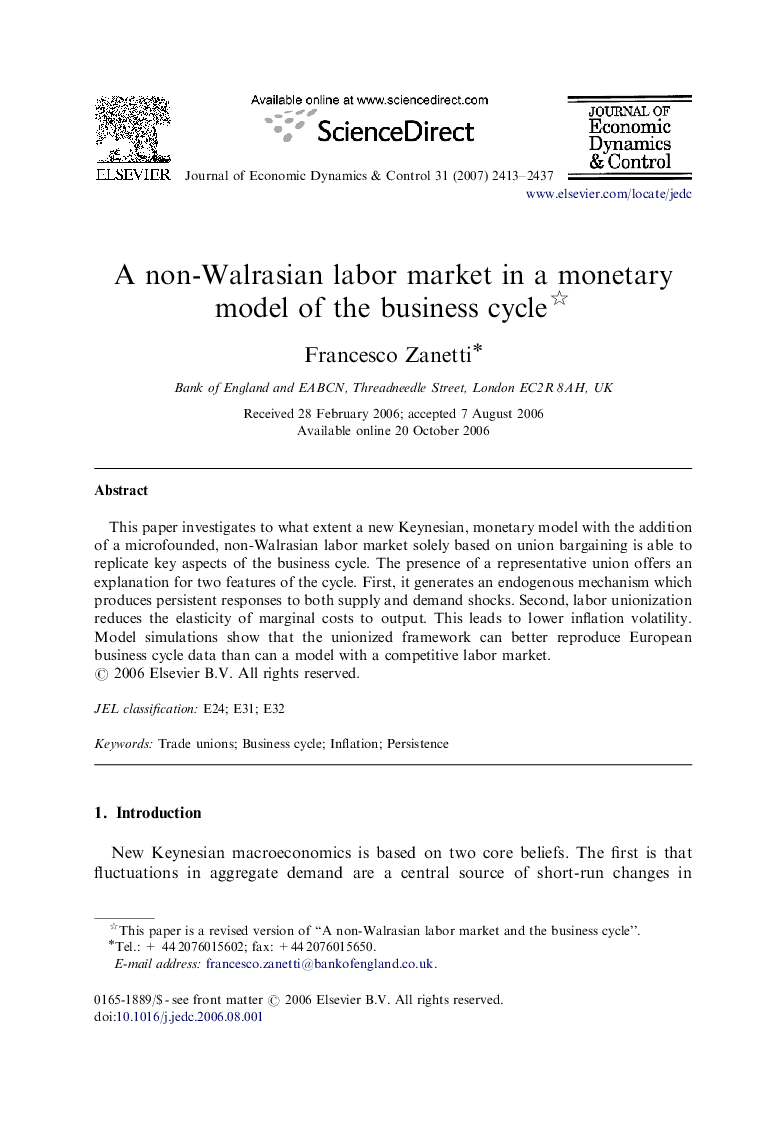| Article ID | Journal | Published Year | Pages | File Type |
|---|---|---|---|---|
| 5099654 | Journal of Economic Dynamics and Control | 2007 | 25 Pages |
Abstract
This paper investigates to what extent a new Keynesian, monetary model with the addition of a microfounded, non-Walrasian labor market solely based on union bargaining is able to replicate key aspects of the business cycle. The presence of a representative union offers an explanation for two features of the cycle. First, it generates an endogenous mechanism which produces persistent responses to both supply and demand shocks. Second, labor unionization reduces the elasticity of marginal costs to output. This leads to lower inflation volatility. Model simulations show that the unionized framework can better reproduce European business cycle data than can a model with a competitive labor market.
Related Topics
Physical Sciences and Engineering
Mathematics
Control and Optimization
Authors
Francesco Zanetti,
